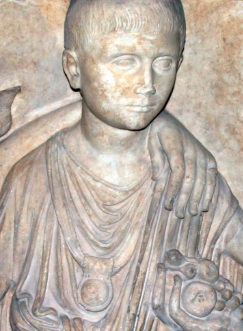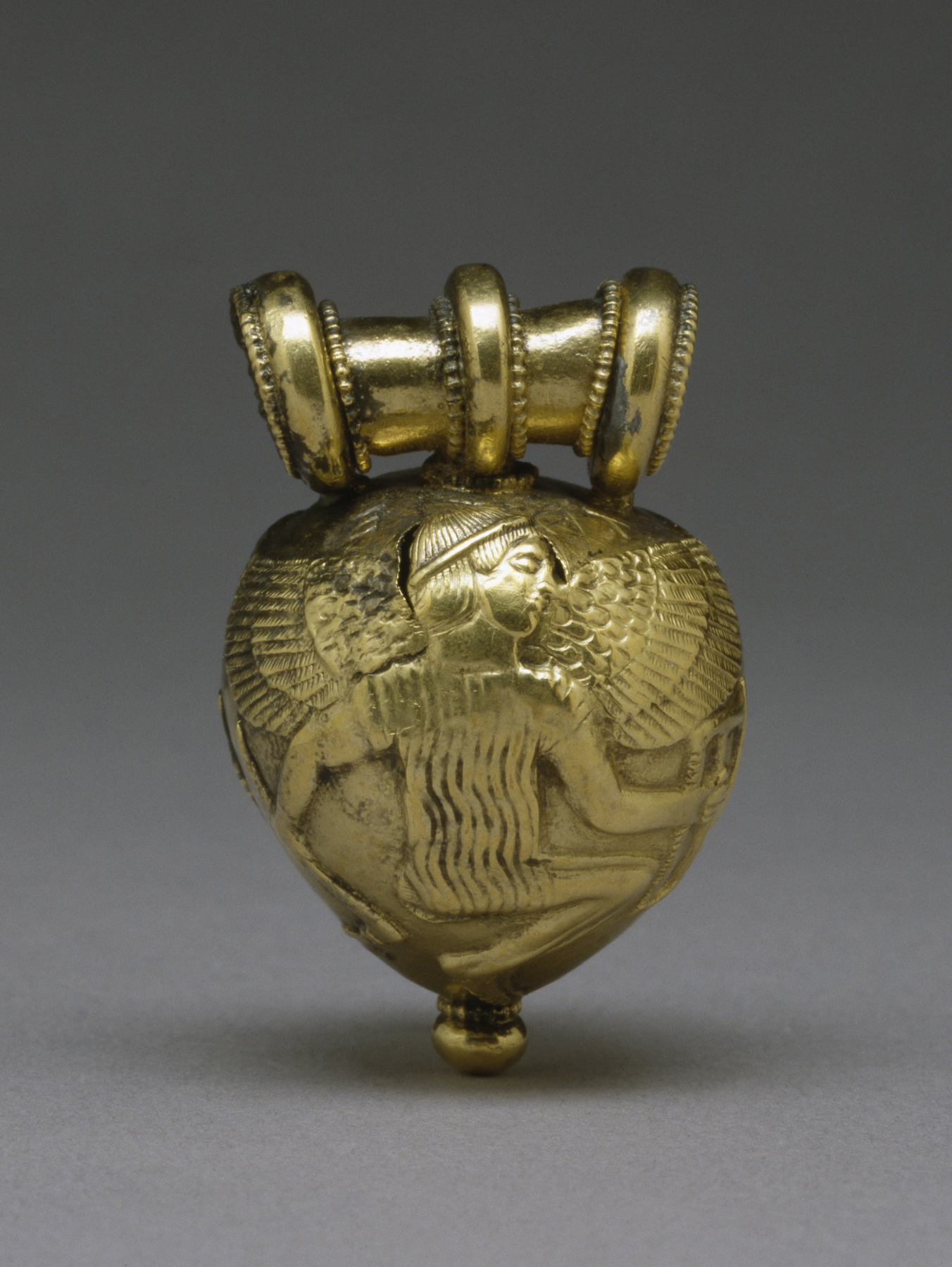Bulla (amulet) on:
[Wikipedia]
[Google]
[Amazon]

 A ''bulla'', an
A ''bulla'', an
Pendant
Roman Bulla
Bulla-pendant; chain
Bulla-pendant
Ear-ring; bulla-pendant
{{DEFAULTSORT:Bulla Amulets Prehistoric Ireland Childhood in ancient Rome Archaeological artefact types Bronze Age art Necklaces Ancient Roman metalwork

 A ''bulla'', an
A ''bulla'', an amulet
An amulet, also known as a good luck charm or phylactery, is an object believed to confer protection upon its possessor. The word "amulet" comes from the Latin word , which Pliny's ''Natural History'' describes as "an object that protects a perso ...
worn like a locket, was given to male children
A child () is a human being between the stages of childbirth, birth and puberty, or between the Development of the human body, developmental period of infancy and puberty. The term may also refer to an unborn human being. In English-speaking ...
in Ancient Rome
In modern historiography, ancient Rome is the Roman people, Roman civilisation from the founding of Rome, founding of the Italian city of Rome in the 8th century BC to the Fall of the Western Roman Empire, collapse of the Western Roman Em ...
nine days after birth. Inside the medallion, an amulet was placed, which was usually a phallus – a symbol that brought good luck in antiquity. Rather similar objects are rare finds from Late Bronze Age Ireland.
Roman bullae
Roman ''bullae'' were enigmatic objects consisting of a neckchain and round pouch containing protective amulets (usually phallic symbols) worn by Roman boys before the age of manhood. ''Bullae'' were made of different substances depending on the wealth of the family they belong to: upper-classes could afford ''bullae'' made of gold or covered in gold foil, while others could only afford materials like lead, leather and cloth.Roman boys
A freeborn Roman boy wore a ''bulla'' until he came of age as aRoman citizen
Citizenship in ancient Rome () was a privileged political and legal status afforded to free individuals with respect to laws, property, and governance. Citizenship in ancient Rome was complex and based upon many different laws, traditions, and cu ...
. Before he put on his ''toga
The toga (, ), a distinctive garment of Ancient Rome, was a roughly semicircular cloth, between in length, draped over the shoulders and around the body. It was usually woven from white wool, and was worn over a tunic. In Roman historical tra ...
virilis'' ("toga of manhood") he placed his boyhood ''bulla'' in the care of his parental household deities (Lares
Lares ( , ; archaic , singular ) were Tutelary deity#Ancient Rome, guardian deities in ancient Roman religion. Their origin is uncertain; they may have been hero-ancestors, guardians of the hearth, fields, boundaries, or fruitfulness, or an ama ...
). Some modern sources interpret Macrobius
Macrobius Ambrosius Theodosius, usually referred to as Macrobius (fl. AD 400), was a Roman provincial who lived during the early fifth century, during late antiquity, the period of time corresponding to the Later Roman Empire, and when Latin was ...
's single reference to an amulet worn by a triumphal general during his procession as evidence that the childhood ''bulla'' was also a standard item of triumphal regalia.
Roman girls
A Roman girl did not wear a ''bulla'' per se, but another kind of amulet called a '' lunula'', until the eve of hermarriage
Marriage, also called matrimony or wedlock, is a culturally and often legally recognised union between people called spouses. It establishes rights and obligations between them, as well as between them and their children (if any), and b ...
, when it was removed along with her childhood toy
A toy or plaything is an object that is used primarily to provide entertainment. Simple examples include toy blocks, board games, and dolls. Toys are often designed for use by children, although many are designed specifically for adults and p ...
s and other things. She would then stop wearing child's clothes and start wearing women's Roman dress.
Bronze Age Ireland
A small number of ''bullae'' have been found in Ireland; they are called "bullae" based on their resemblance to the Roman form.Other than superficial resemblance, Irish and Roman ''bullae'' have no known connection. The Irish bullae so far found were made of base metalIrish bullae are usually made of lead, but also tin. Bullae made of clay are rare. – sometimes clay – covered with a folded over piece of gold foil. The Irish bullae date to the Late Bronze Age, about 1150–750 BCE. They were presumably worn suspended round the neck with a cord running through the hole below the flat top. The body of the bulla has roughly vertical sides before making a semi-circle or inverted pointed arch at the bottom. The gold is incised with geometrical decoration. Whether they were purely for adornment or had an amuletic or other function is unclear. Despite the small weight of gold used they would have been available only for elite groups.See also
* Shropshire bulla *Bulla (seal)
A bulla (Medieval Latin for "a round seal", from Classical Latin ''bulla'', "bubble, blob"; plural bullae) is
an inscribed clay, soft metal (lead or tin), bitumen, or wax token used in commercial and legal documentation as a form of authentication ...
* Swaddled infant votive
Notes
References
External links
Pendant
Roman Bulla
Bulla-pendant; chain
Bulla-pendant
Ear-ring; bulla-pendant
{{DEFAULTSORT:Bulla Amulets Prehistoric Ireland Childhood in ancient Rome Archaeological artefact types Bronze Age art Necklaces Ancient Roman metalwork